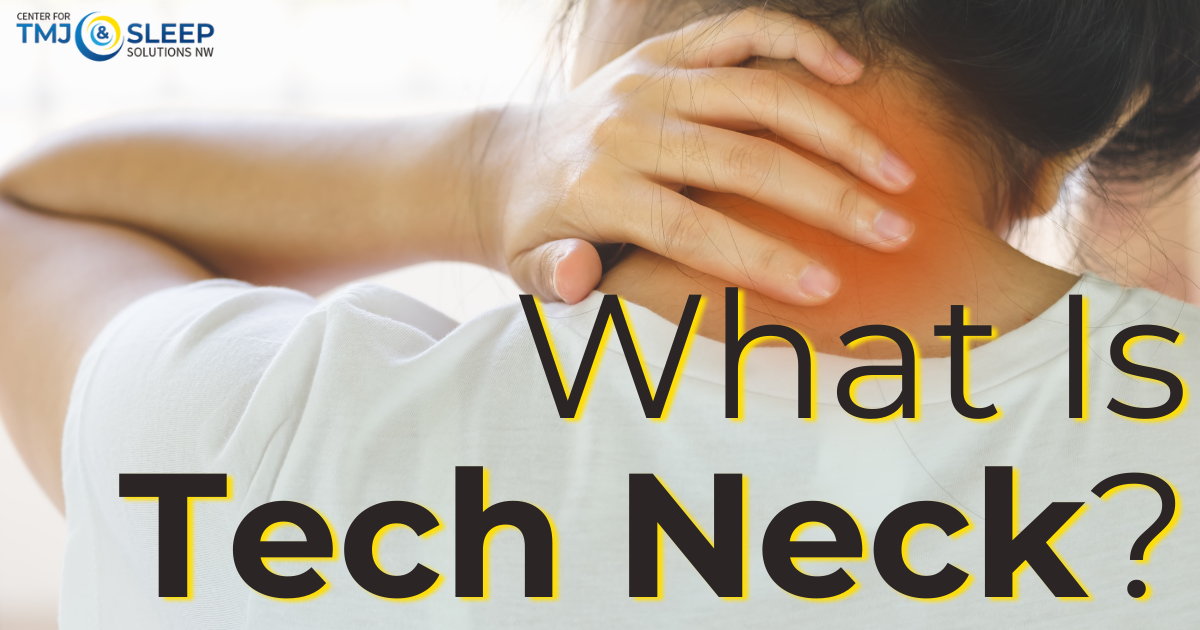
TMJ And Tech Neck: A Connection Worth Noticing
It’s easy to lose track of posture during a long day at your desk or scrolling on your phone. If you’ve been dealing with jaw pain, headaches, or tension in your neck and shoulders, your screen habits could be part of the problem.
At Center for TMJ & Sleep Solutions NW, we’ve seen how something as simple as posture can have a surprising impact on jaw health. Many patients are surprised to learn just how connected their daily tech use and TMJ symptoms really are.
What Is Tech Neck?
“Tech neck” refers to the strain caused by repeatedly looking down at your phone, tablet, or laptop. When your head tilts forward, the muscles in your neck and shoulders have to work harder to hold it up. This puts stress on the entire upper body, including the muscles and joints that control your jaw. Over time, this posture can shift your jaw out of alignment, causing discomfort in the temporomandibular joint (TMJ). If you already live with TMJ disorder, that added pressure may lead to more frequent or intense symptoms.
If you’ve noticed jaw stiffness after working at your computer, tension headaches, or tightness in your neck and shoulders by the end of the day, posture could be contributing. Many people also experience clicking or popping in the jaw or clench their teeth without realizing it.
What You Can Do to Help Your Jaw Feel Better
Small changes in your posture can go a long way in relieving jaw pain. Here are a few helpful tips:
- Keep your screen at eye level to avoid hunching forward.
- Take a posture break every 30–60 minutes to reset your neck and shoulders.
- Sit in a supported position with your feet flat on the floor.
- Try to keep your jaw relaxed and avoid clenching while focused.
At Center for TMJ & Sleep Solutions NW, we help patients pinpoint the causes of jaw discomfort and find lasting relief. If posture is making your symptoms worse, we can help you take the next step. Contact us to schedule an appointment in Silverdale, Federal Way, or Bellevue, WA.










